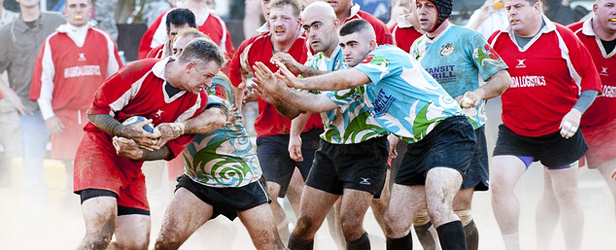
What if I told you that I could reduce your training time, get the same results as HIIT, and improve your athletes’ skills at the same time? Crazy talk, right?
Small-sided games are a great tool to help with a faster transfer from the gym to the field. If you aren't using this with your athletes, you're behind the eight ball. Not a competitive athlete? You can use this same concept in your training as a great alternative to HIIT training, which can yield similar results (1). The concept of a small-sided game is simple. You have a shortened game with a fewer number of players performed a few times per week. The idea follows some of the most basic concepts in periodization:
- Increased intensity and lower volume in-season
- Increased sport-specific training during the competitive phase
It is often regarded as 'good enough' to maintain the physical performance level of competitive athletes throughout the season. Weight room time and other conditioning sessions are scaled back to allow more time for both recovery between games and technical/tactical practices. This is where small-sided game training fits in beautifully. The strength and conditioning coach can set the loading parameters (i.e., work to rest ratios), and the sport coach can setup game scenarios or let them happen on the fly if he wishes.
In recent studies, the results have been very promising (1–6). Following eight weeks of small-sided game training twice per week, the physical performance of elite rugby players was assessed. There was significant improvement in all measured abilities including the intermittent fitness test (+ 1.29 percent), the 10-meter sprint (- 3.17 percent), the 20-meter sprint (- 1.37 percent), and the 40-meter sprint (- 0.96 percent) as well as mean sprint time (- 2.11 percent), total sprint time (- 2.11 percent), and percentage of sprint decrement (7.10 versus 5.93 percent) during the 20-meter repeated sprint ability test (6). Similar results were seen in soccer players (2). They had significantly reduced percentages of VO2 maxes and heart rates at 9-, 11-, and 14-km run speeds. When basketball players were used to compare the effects of small-sided games with high intensity interval training, both had similar effects on aerobic capacity. Additionally, the small-sided game gave improvements in agility, upper body power, and sport-specific skills such as shooting (1).
With the reduced number of players, the small-sided game can often exceed match intensity and elicit similar responses as both long and short high intensity intervals (4). This can have a huge time saving impact, as game tactics can be trained at the same time as match specific fitness. It can also be a hell of a lot more fun than regular old sprints.
Setup and Use of the Small-Sided Game
- Reduce the number of players by at least half. The greater the reduction in players, the greater the intensity and workload per player. However, this can impact the ability to simulate real game time situations (3, 4).
- Reduce the game time. General recommendations are for small-sided games to last between three and ten minutes with four to ten games per practice and 3:1 play to recovery ratio between games (2, 6).
- Alter field size. Mean speed, high speed running distance, number of sprints, peak speed, blood lactate concentration, and perceived exertion are all significantly impacted by field size (4). Choose a field size based on the desired training effect. If you're looking to increase top speed and anaerobic ability, a larger field is the way to go. If you're looking to increase contact and work on close quarters skills, you should reduce the field.
- Set other variables. A coach may decide to not use a goal keeper, have an offensive and defensive side, only allow certain positions or players to score, or any other variable that could contribute to enhancing either game fitness or tactical readiness (3).
- Plan to do it! One of the biggest mistakes that people and coaches make is a failure to plan. Reading this article and making a mental note to try this out “someday” means that more likely than not, you never will. Sit down and write this into your training schedule. If you’re really keen, plan out your game parameters as described in the four points above.
Once you have become familiar with the small-sided game, it can make an excellent tool for both the physical and tactical preparation of your team and significantly increase time devoted to recovery in-season. Alternatively, if you're a fitness coach or enthusiast, the small-sided game can be an excellent and fun way to get the benefits of high intensity interval training for you or your clients (1).
References
- Delextrat et al (2013) Small sided game training improves aerobic capacity and technical skills in basketball players. International Journal of Sport Medicine Oct 15 (Epub ahead of print).
- Owen et al (2012) Effects of a periodized small side game training intervention on physical performance in elite professional soccer players. Journal of Strength and Conditioning Research 26(10):2748–54.
- Hill-Hass et al (2011) Physiology of small sided games training in football: A systematic review. Sports Medicine 1:41(3):199–220.
- Kenneth et al (2012) Factors affecting exercise intensity in rugby specific small sided games. Journal of Strength and Conditioning Research 26(8):2037–42.
- Koklu Y (2012) A comparison of physiological responses to various intermittent and continuous small sided games in young soccer players. Journal of Strength and Conditioning Research 31:89–96.
- Seitz et al (2013) The athletic performance of elite rugby players is improved after an 8-week small sided game training intervention. July 8 (Epub ahead of print).









